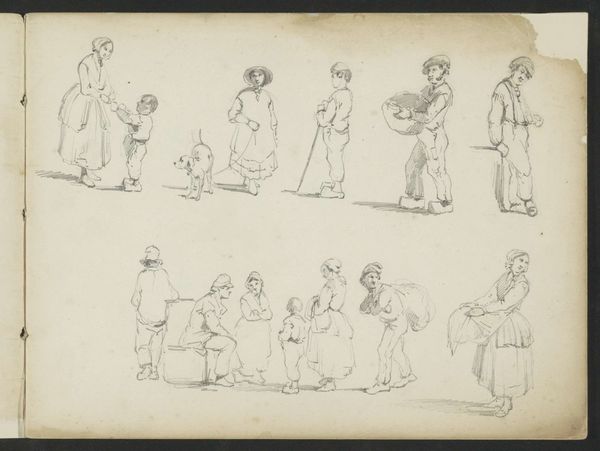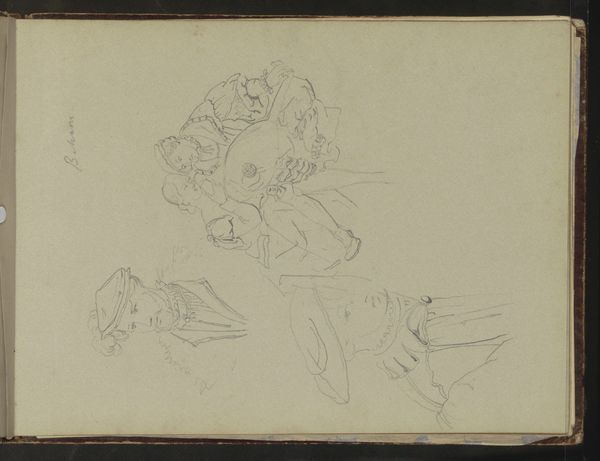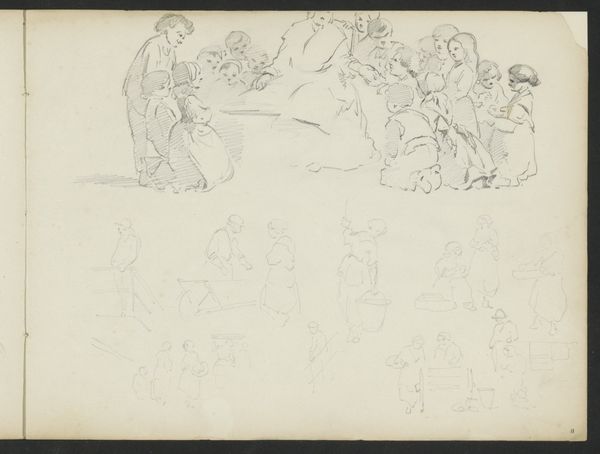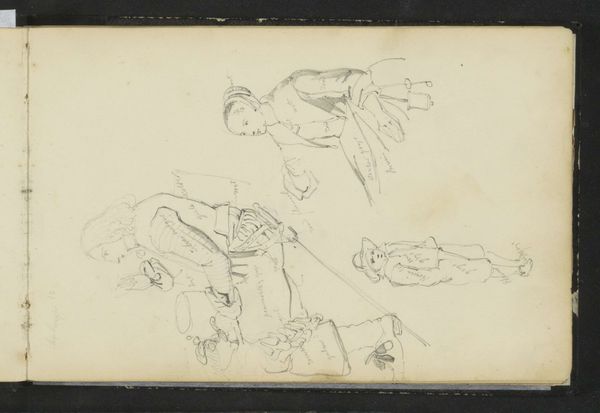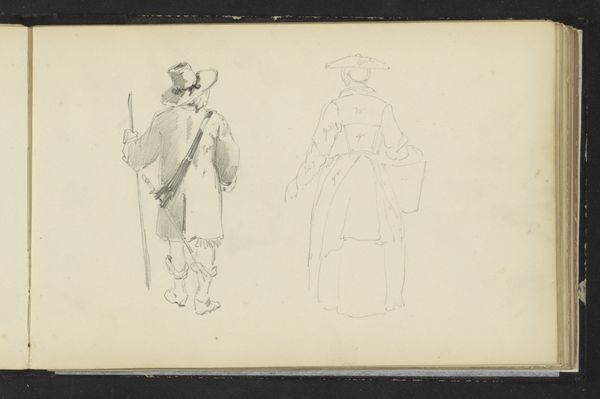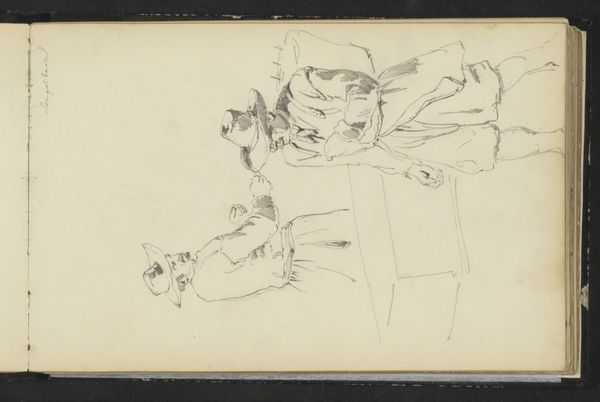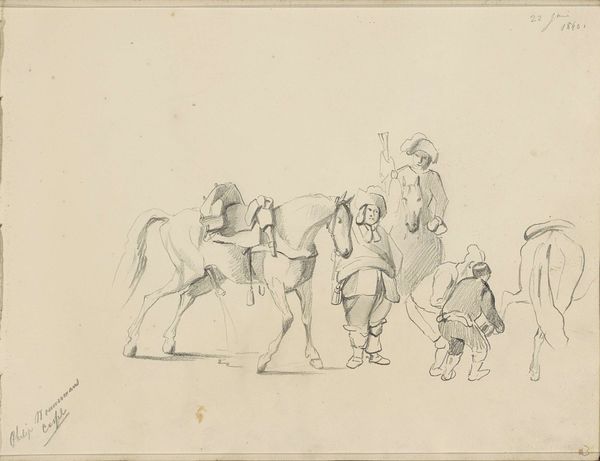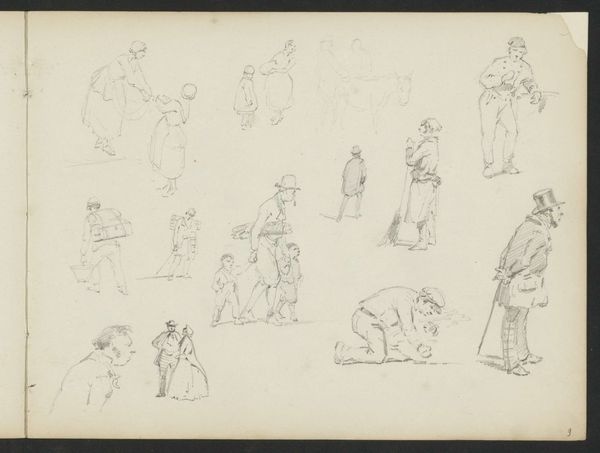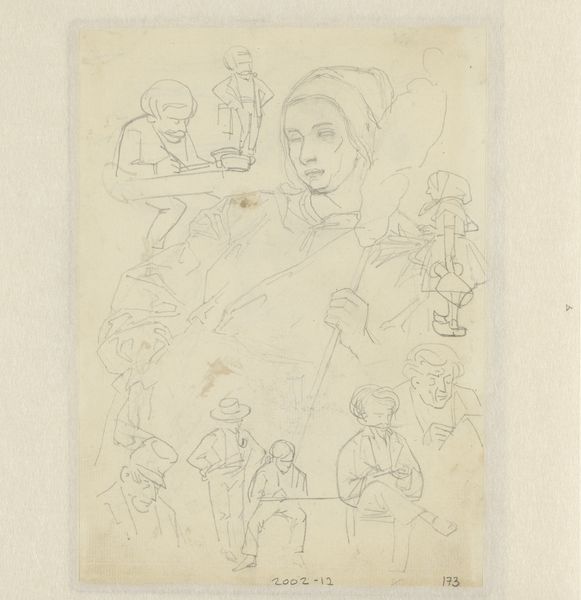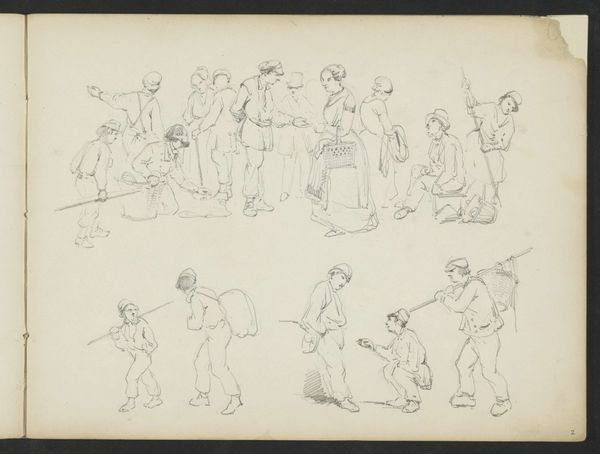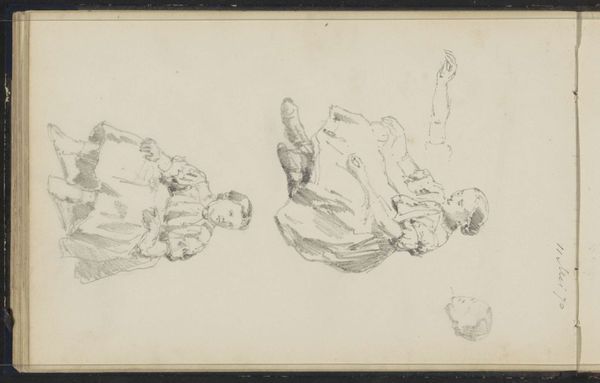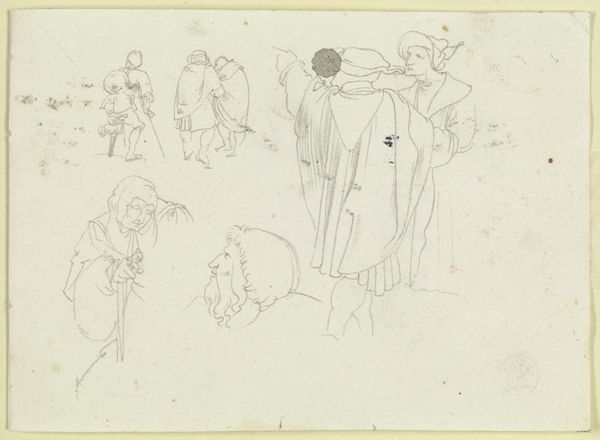
drawing, paper, pencil
#
portrait
#
drawing
#
quirky sketch
#
sketch book
#
incomplete sketchy
#
hand drawn type
#
figuration
#
paper
#
personal sketchbook
#
sketchwork
#
sketch
#
pen-ink sketch
#
pencil
#
sketchbook drawing
#
storyboard and sketchbook work
#
sketchbook art
Copyright: Rijks Museum: Open Domain
Curator: This is “Figuren in verschillende houdingen,” or “Figures in various poses,” a sketch attributed to Cornelis Springer, dating from around 1846 to 1882. It’s a pencil and ink drawing on paper, and part of the Rijksmuseum’s collection. Editor: What strikes me first is the light touch and immediacy. The figures seem to emerge from the page with only a few lines. There’s an appealing incompleteness to the sketchwork, a freedom. Curator: Absolutely. As a study, it provides insight into Springer's working method and artistic development. Sketchbooks such as these would often contain the first inklings of more substantial works, and reflected the prevailing artistic practice of the time. Editor: It's a study in character, too, wouldn't you say? The tilt of a head, the set of the shoulders—so much is communicated with minimal detail. And those hats! The play of light and shadow that’s suggested, without actually being there, is brilliant. Curator: Indeed. And perhaps the sketches provide a valuable view into the evolving styles of dress. One can almost imagine these figures populating the urban scenes Springer would later paint. They tell stories of status, trade and societal norms of the mid to late 19th century. Editor: There's a certain warmth that belies the somewhat severe expressions. The slight asymmetry, especially, contributes to that. These aren’t idealized figures; they feel genuinely observed. Curator: Yes, and what Springer captures so effectively is a slice of everyday life, the reality of people observed and translated into these rapid notations. He’s essentially chronicling society. Editor: This work feels especially intimate because it's not the completed work. It's a peek into the artist’s creative process itself. Curator: It makes you appreciate how much careful observation and thinking goes into the creation of grander artworks that can, at first glance, seem almost effortless. Editor: Seeing this now makes me want to go back and re-examine his finished works, noticing those previously overlooked figures. Curator: For me, it highlights art’s value as social commentary, chronicling change for posterity.
Comments
No comments
Be the first to comment and join the conversation on the ultimate creative platform.

